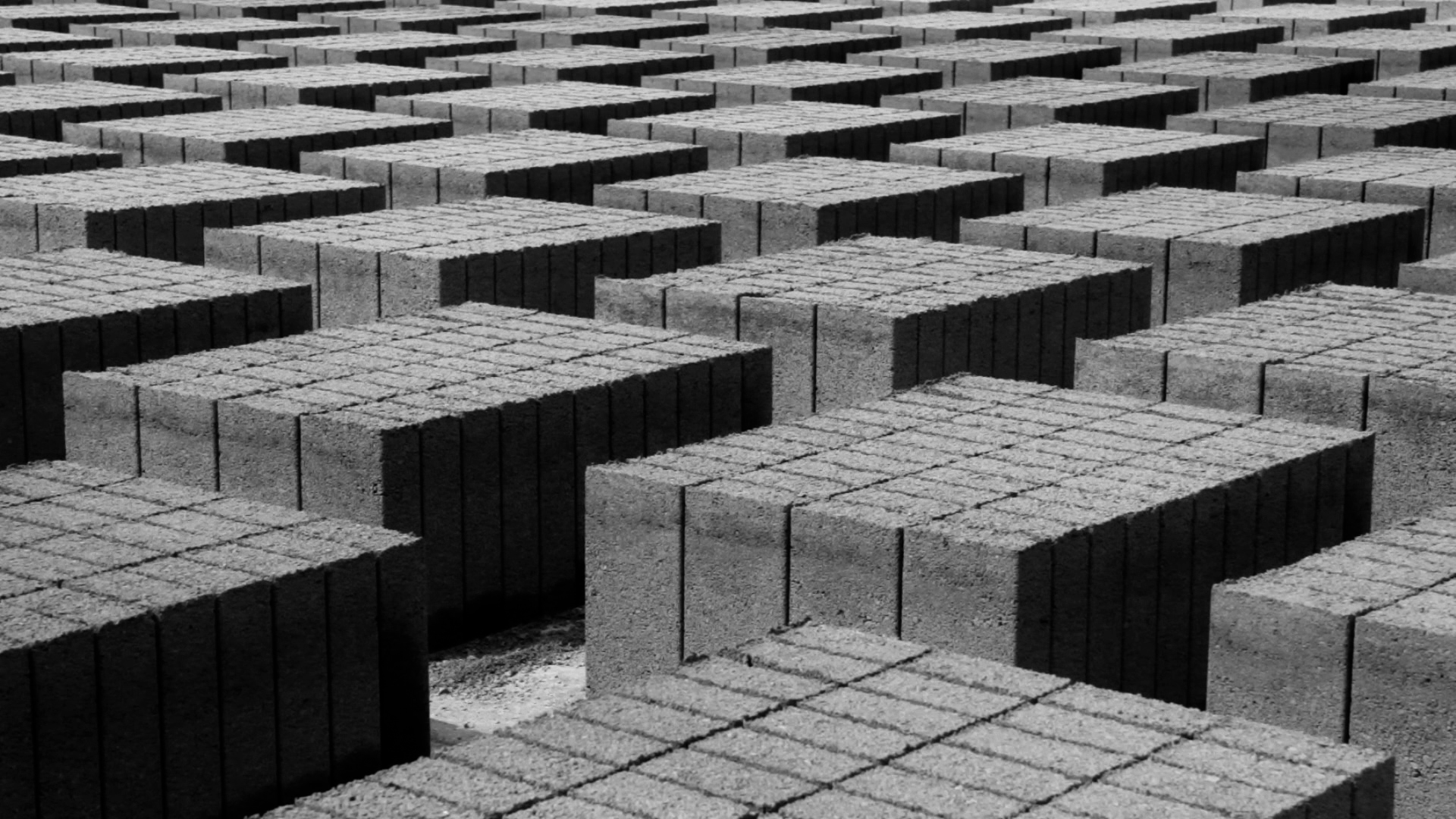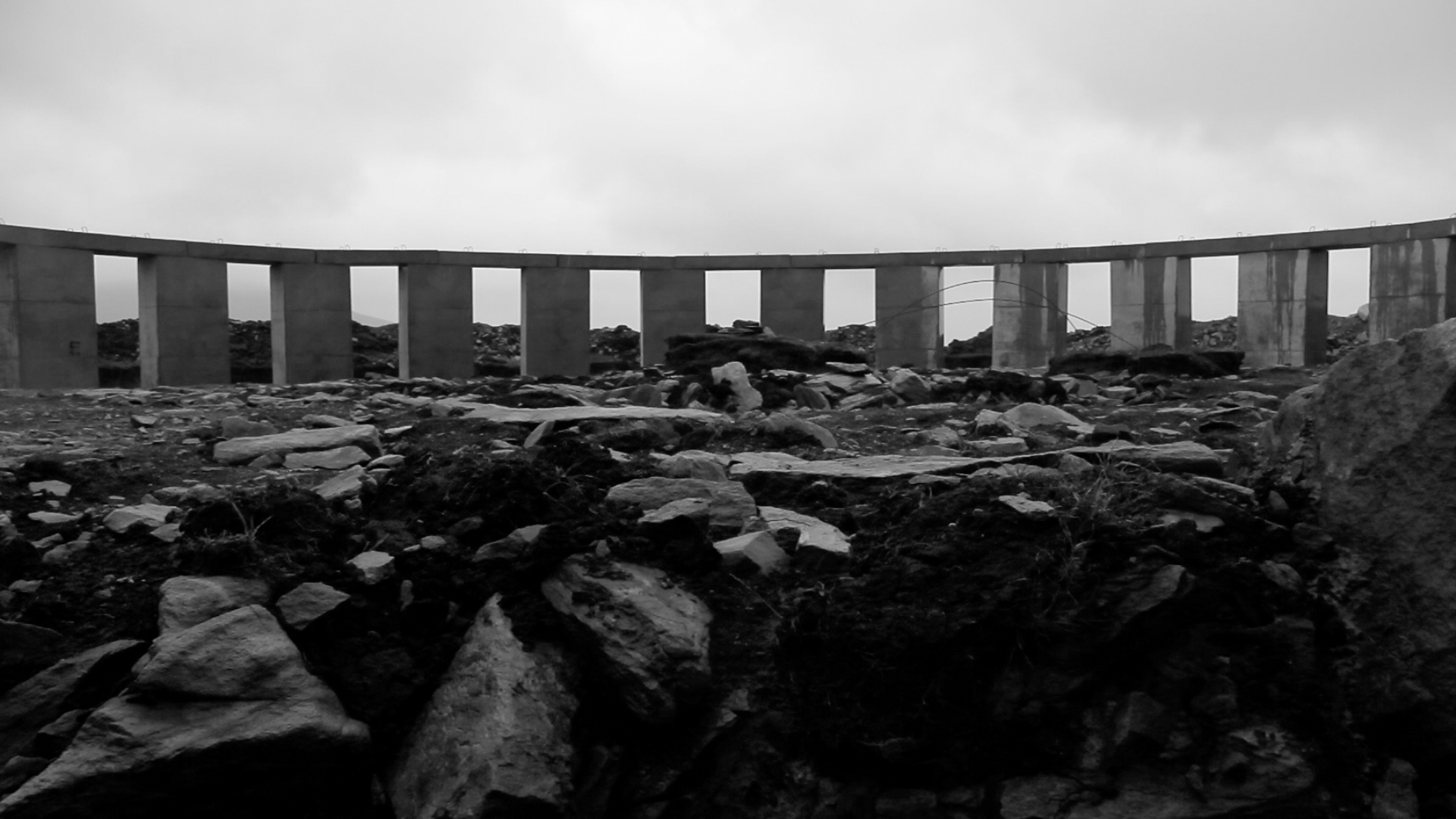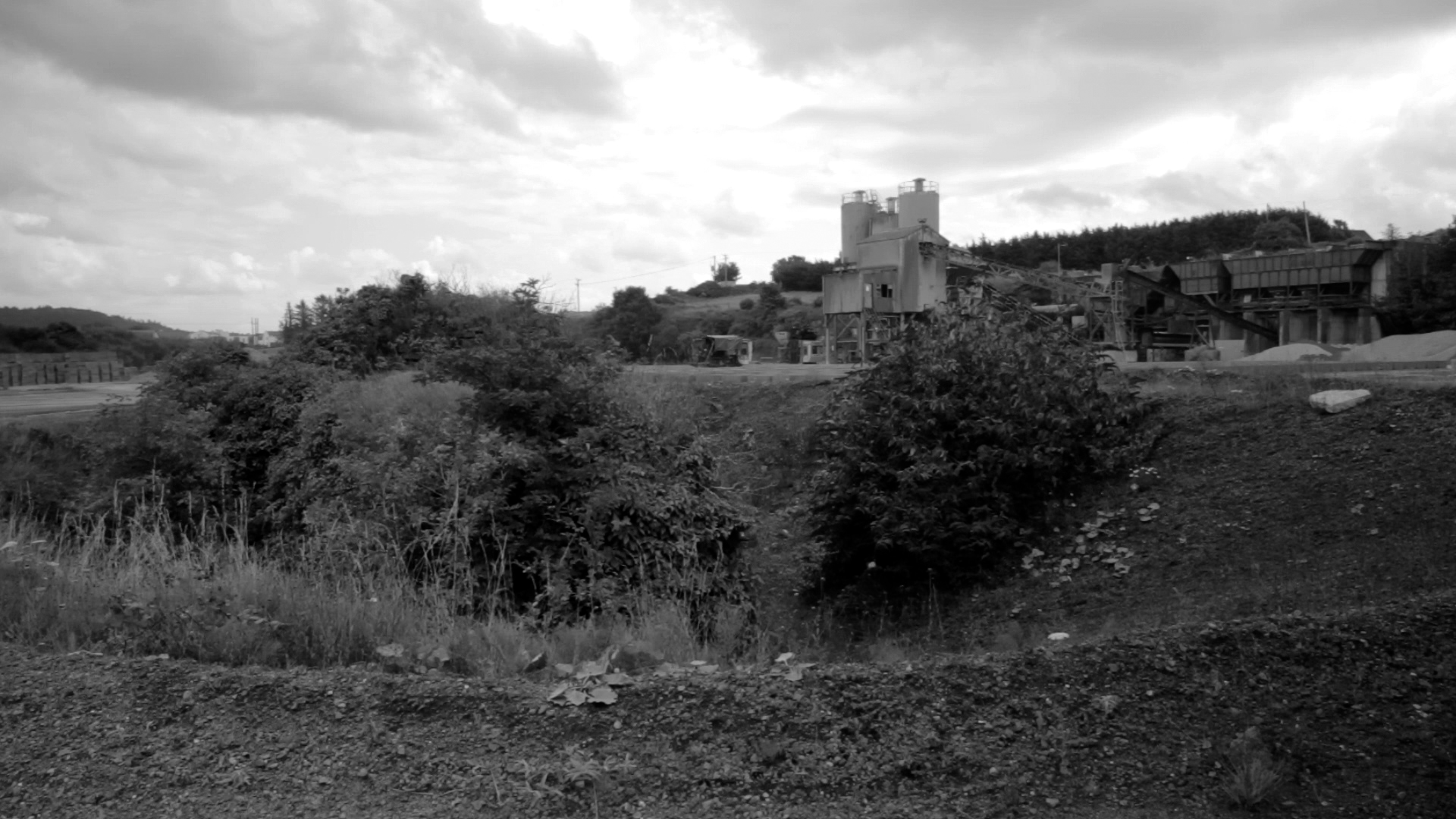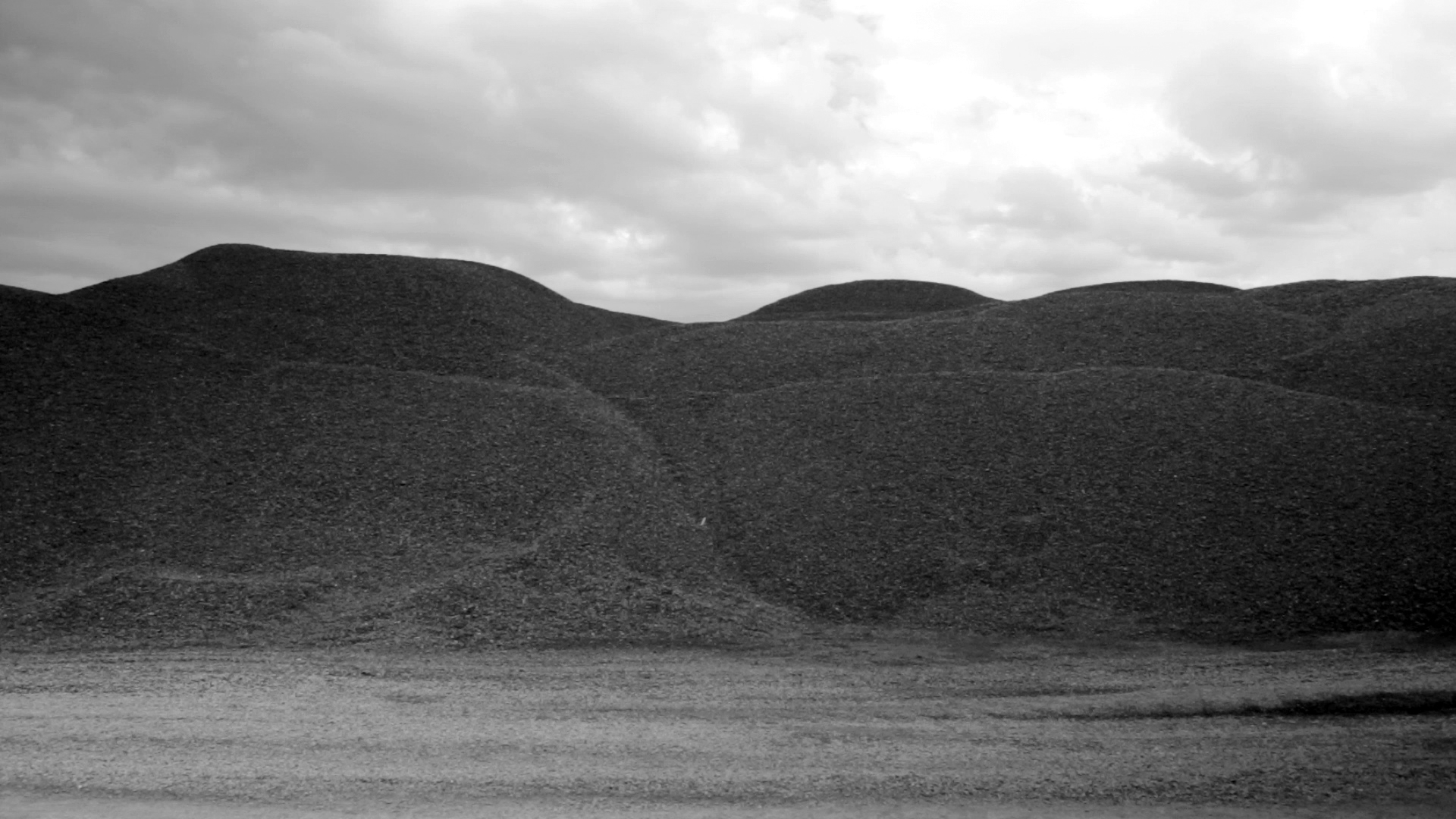These Islands: Ballisadare, Co. Sligo
A line engraving drawn by T.Cocking in 1791 which appears in F.Grose’s ‘Antiquities of Ireland’ shows a view of the east aspect of Ballysadare Abbey, comprising the ruins of two walls with shrubs in foreground and mountains in the background. The arches of the belfry and a small part of the tower remain, and are of a blackified stone and good masonry.
Peter Maybury, Tom dePaor
Single channel HD video and stereo sound
2017
Duration: 5mins
These Islands: Slievemore, Dooagh, Keel East, Co. Mayo
Introduced from southern Chile for its handsome architecture, this charismatic megaphyte is easily cultivated. Climatic conditions on the west coast of Ireland are similar to its ancestral home, with high annual rainfall and temperatures above 0. First recorded on Achill in 1939, pollen analysis by Hickey & Osborne in 1998 suggests its presence on the island for up to one hundred years. It has since escaped the garden and cultivation andis now naturalised in the Achill blanket bogs.
Very aggressive, nothing grows in its shade and its dense colonies threaten indigenous biodiversity, agriculture and amenity. Removal is difficult, requiring machinery and manpower. The ability of Gunnera tinctoria to regenerate makes disposal treacherous, requiring deep burial and scorched earth. Trials have been carried out at infestations at Dooagh using glyphosate, resulting in further environmental contamination.
Peter Maybury, Tom dePaor
Single channel HD video and stereo sound
2013/2017
Duration: 5mins





